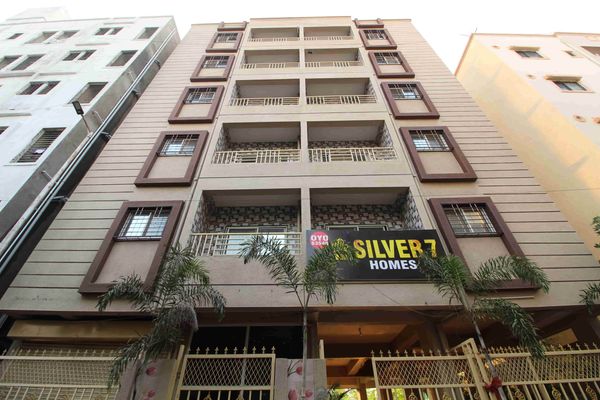Designing Logistics Software for Modern Shipping and Transportation Companies
 Nisha Verma
02 Jan, 2025
15 mins read
194
Nisha Verma
02 Jan, 2025
15 mins read
194

Logistics software app development has proven to be a game changer for transportation companies looking to optimize operations, improve performance, and reduce processes.
Whether it's tracking goods in real time or optimizing delivery routes, logistics software is essential. However, software development presents its own set of obstacles, which firms frequently encounter during this process.
This logistics software development solutions tutorial will explain how to design logistics software for a shipping and transportation company.
About Logistics Software Development
Shipping and transportation firms work in a fast-paced atmosphere where every minute counts. Robust solutions and a flexible logistics software development guide are necessary to
- Adjust to shifting demand
- Improve resource allocation
- Mitigate hazards efficiently
Logistics software development is the process of designing complex digital solutions that address the full supply chain ecosystem. Understanding an organization's needs and pain areas is key to building software that
- Streamlines processes
- Improves efficiency
- Improves overall productivity
At its core, it is about using the power of technology to synchronize varied processes, optimise routes, and enable smooth communication across businesses.
Key Considerations for Developing Logistics Software
Logistics software development requires a thorough methodology. When developing logistics software, you must consider three factors: scalability, adaptability, and security. Let's have a look at the main aspects for creating faultless logistics software:
1. Comprehensive analysis.
- Conduct a detailed investigation to better grasp the shipping and transportation company's specific demands and ambitions.
- Engage stakeholders from several departments to gain insight into their needs and problem issues.
- Align the logistics app's objectives with the overall corporate goals to guarantee strategic alignment.
2. Identify significant characteristics or functionalities.
- Consider features like load tracking, inventory management, route optimization, and reporting/analytics.
- Tailor the software to meet the company's most vital demands while eliminating excessive complexity.
- Consider adding features that improve visibility, efficiency, and decision-making in logistics operations.
3. Evaluate scalability, flexibility, and adaptability.
- Create the logistics app with scalability in mind to accommodate rising data volumes, user traffic, and functionality.
- Maintain flexibility to meet changes in company processes, legislation, and market dynamics.
- Create a modular design that enables for simple updates and alterations to suit changing business requirements.
4. User-friendly interface with seamless connectivity
- Prioritize user experience design to develop an intuitive and simple-to-navigate interface.
- Ensure seamless interaction with existing systems, such as ERP (Enterprise Resource Planning) and TMS (Transportation Management System).
- Provide users with training and support to ensure maximum software acceptance and utilization.
Furthermore, easy interaction with current systems and respect to industry standards are essential components of the development process.
Steps for Building Logistics Software
You should now be ready to begin the process of developing a logistics app. However, an organized approach is required to ensure success and achieve the intended objectives. Here are the important stages to take while creating a logistics software development guide:
Step One: Requirement Analysis
It allows stakeholders to gain insight into business demands and difficulties.
- Conduct detailed interviews and discussions with stakeholders to better understand their requirements and objectives.
- Document the requirements and generate a thorough project scope.
Step 2: Design and Planning
This step assists in developing a blueprint for the software architecture, with a focus on scalability and usability.
- Create wireframes and prototypes to illustrate the user interface and experience.
- Define the architectural and technical standards for the software.
Step 3: Development and Implementation.
This is the final step of development and implementation. It uses cutting-edge technology to bring the design to life while also ensuring adherence to best standards.
- Write code and develop software based on the design specifications.
- Test and debug the program to ensure it fulfills the quality standards and functional requirements.
Step 4: Deployment and Training
This involves a staggered rollout of the software. It also minimizes disruption to operations.
- Install and set up the software in a production environment.
- Provide users with training and support to facilitate their adjustment to the new system.
Highlights of Logistics Software
The value of logistics software rests in its capacity to give a slew of premium features targeted to the specific demands of shipping and transportation companies. Some of the key aspects covered in this logistics software development tutorial are listed below.
1. Real-Time Supply Chain Visibility
Provide real-time visibility across the whole supply chain, including shipment status, delivery routes, and inventory levels.
Allow stakeholders to track and monitor shipments at all stages of the logistics process. It ultimately increases transparency and responsiveness.
2. Order Management
- Ensure efficient order processing from placement to fulfillment, shipment tracking, and invoicing.
- Automate order routing, allocation, and prioritizing. It further lowers manual labor and errors in order processing.
3. Forecasting Tools
- Use data analytics and forecasting algorithms to anticipate demand, supply chain problems, and inventory levels.
- Help shipping and transportation organizations maximize inventory management, production planning, and procurement using precise demand projections.
4. Inventory and Logistics Management
- Streamline inventory management procedures, such as picking, receiving, storage, and packing.
- Optimize inventory levels to reduce stockouts and excess inventory. It enhances both cash flow and operational efficiency.
5. Warehouse Management
- Enhance warehouse operations with features including slotting, space efficiency, and labor management.
- Pick lists, automated workflows, and inventory management within the warehouse can all help to ensure efficient order fulfillment.
By implementing these top features into logistics software, shipping and transportation organizations may streamline their operations, increase productivity, and provide greater customer service.
Best Practices in Logistics App Development
Building a logistics software takes both technical expertise and industry experience. We have highlighted some best practices as indicated in this logistics software development guide.
1. Apply current software development approaches
- Adopt modern technologies like cloud computing, IoT, and AI/ML for logistics to improve the functionality and performance of your software.
- Implement agile or DevOps development approaches to improve collaboration, flexibility, and quick iteration in logistics and transportation software development.
2. Continuous communication and collaboration with stakeholders
- Maintain open communication lines with stakeholders such as shipping and transportation providers, logistics partners, and end-users.
- Provide regular feedback and incorporate stakeholder input into the software design/development process to maintain alignment with company goals and user requirements.
3. Regular testing and quality assurance
- Conduct extensive testing at each level of the development process to detect and correct any bugs, problems, or performance concerns.
- Implement automated testing frameworks and technologies to speed up the testing process and assure complete test coverage.
4. Implementation of strong security measures
- Use access controls, encryption, and data masking techniques to protect sensitive data like customer information and transactional data.
- Follow industry-specific legislation and compliance requirements such as GDPR (General Data Protection Regulation) and HIPAA (Health Insurance Portability and Accountability Act) to reduce risks and protect data privacy and security. And if you are unfamiliar with cybersecurity, your IP address, how a virtual private network works, or other data confidentiality and integrity principles, this is an excellent time to learn more about them so that you may utilize more secure data protection methods.
Conclusion
Logistics software development is transforming the transportation and shipping industries by enabling businesses to streamline operations, enhance decision-making, and deliver exceptional service. By adhering to a structured approach—focusing on analysis, adaptability, and user-centric design—companies can build solutions that address their unique challenges while leveraging cutting-edge technologies like AI and IoT.
Incorporating features such as real-time supply chain visibility, order management, and forecasting tools ensures robust functionality that meets modern logistical demands. Following best practices like stakeholder collaboration, rigorous testing, and robust security implementation further guarantees a seamless development process.
For transportation companies looking to embrace the future of logistics, custom transport and logistics software solutions offer a pathway to optimized efficiency and long-term growth. Partnering with experienced transportation software developers ensures you have the expertise needed to bring these transformative solutions to life.
Written By:
Nisha Verma



Hotels at your convenience
Now choose your stay according to your preference. From finding a place for your dream destination or a mere weekend getaway to business accommodations or brief stay, we have got you covered. Explore hotels as per your mood.





